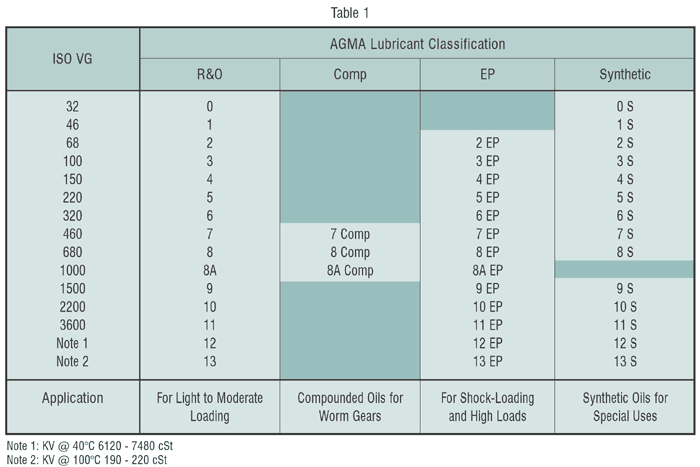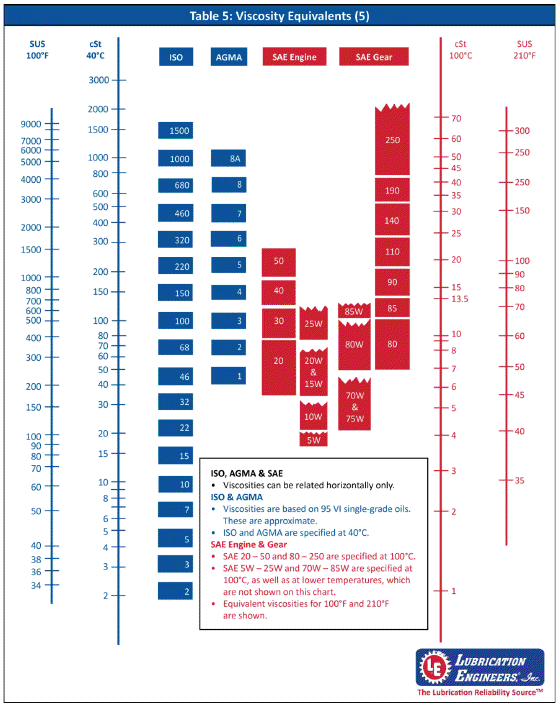
The American Gear Manufacturers Association (AGMA) has gone a step further than the ISO 3448 viscosity classification system for industrial oils in describing lubricant classifications for industrial gear lubricants. The AGMA standard provides the user with viscosity classifications as well as guidelines for minimum performance levels aimed at industrial gear oils. It aligns with the ISO viscosity standards and is verified by the American National Standards Institute (ANSI).
It is published as the AGMA/ANSI 9005 standard and describes the following four types of industrial gear lubricants:
Rust and Oxidation-Inhibited Gear Lubricants (also referred to as R&O gear oils) are petroleum or semisynthetic based oils formulated with additive systems that protect against rust and oxidation. Some R&O gear oils also contain minute amounts of anti-wear additives. The viscosity grades for R&O gear oils are identified by AGMA numbers 0 to 13.
Compounded Gear Lubricants are petroleum based oils with rust and oxidation inhibitors, demulsibility additives and 3 percent to 10 percent fatty oils. These gear lubricants are frequently used in worm gear drives to provide adequate lubrication and prevent sliding wear. Compounded gear oils are identified by single-digit AGMA numbers with the suffix “Comp” from 7 Comp to 8A Comp.
Extreme Pressure Gear Lubricants (commonly referred to as EP gear oils) are petroleum or semisynthetic based and are fortified with multifunctional additive systems. These additive packages generally contain rust and oxidation inhibitors, EP additives, demulsifiers, antifoam agents, and in some cases solid lubricants such as graphite. AGMA numbers combined with the suffix “EP” describe these lubricants and range from 2 EP to 13 EP.
Synthetic Gear Lubricants are formulated with fully synthetic base stocks and are used whenever petroleum based gear oils have reached their performance limit. Synthetic gear lubricants have the advantage of improved thermal and oxidation resistance and being stable over a wide range of operating temperatures. They normally contain additives similar to those found in EP gear oils. Synthetic gear lubricants are identified by AGMA numbers with the suffix “S” from 0 S to 13 S.
The table below illustrates how AGMA gear oil viscosities correspond to ISO industrial oil viscosities:

Residual compounds 14R and 15R (asphaltic cutbacks) are not included above since these lubricants are being phased out.
In this and previous articles we have discussed the following viscosity classification systems: SAE engine oils, SAE gear lubricants, ISO industrial fluids and AGMA industrial gear lubricants. The following chart brings all these together and provides a comparative illustration of all the various viscosity grades:

Not all viscosity grades appear on the chart as only the most commonly used grades are listed.
Viscosities relate horizontally only.
For example, the following oils have similar viscosities: ISO 150, AGMA 4, SAE 40 and SAE 90.
This may surprise you since many people think that gear oil is thicker.

